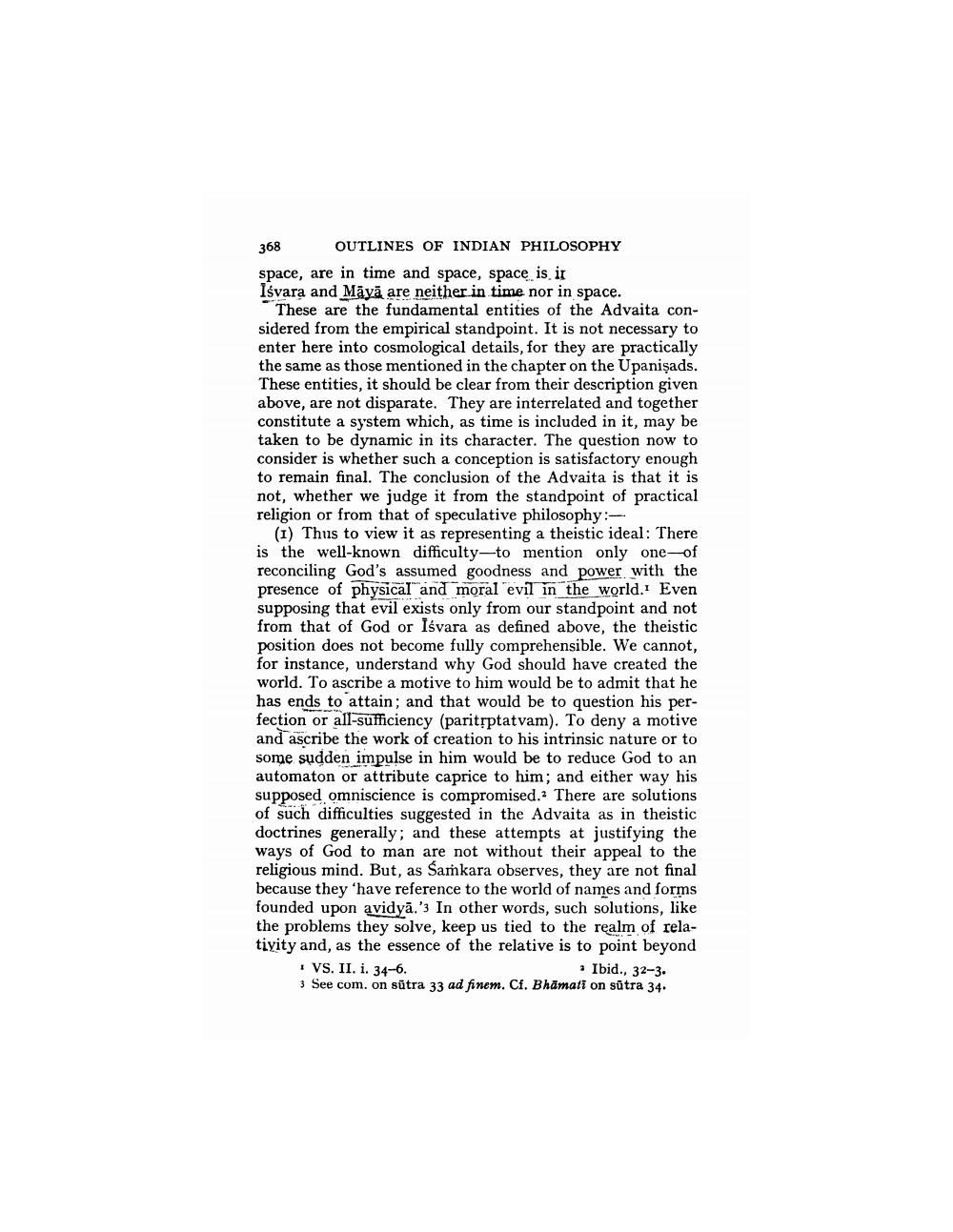________________
368 OUTLINES OF INDIAN PHILOSOPHY space, are in time and space, space is it Isvara and Māyā are neither in time nor in space.
These are the fundamental entities of the Advaita considered from the empirical standpoint. It is not necessary to enter here into cosmological details, for they are practically the same as those mentioned in the chapter on the Upanişads. These entities, it should be clear from their description given above, are not disparate. They are interrelated and together constitute a system which, as time is included in it, may be taken to be dynamic in its character. The question now to consider is whether such a conception is satisfactory enough to remain final. The conclusion of the Advaita is that it is not, whether we judge it from the standpoint of practical religion or from that of speculative philosophy :
(1) Thus to view it as representing a theistic ideal: There is the well-known difficulty—to mention only one-of reconciling God's assumed goodness and power with the presence of physical and moral evil in the world. Even supposing that evil exists only from our standpoint and not from that of God or Isvara as defined above, the theistic position does not become fully comprehensible. We cannot, for instance, understand why God should have created the world. To ascribe a motive to him would be to admit that he has ends to attain, and that would be to question his perfection or all-sufficiency (paritrptatvam). To deny a motive and ascribe the work of creation to his intrinsic nature or to some sudden impulse in him would be to reduce God to an automaton or attribute caprice to him; and either way his supposed omniscience is compromised. There are solutions of such difficulties suggested in the Advaita as in theistic doctrines generally; and these attempts at justifying the ways of God to man are not without their appeal to the religious mind. But, as Saṁkara observes, they are not final because they have reference to the world of names and forms founded upon avidyā.'3 In other words, such solutions, like the problems they solve, keep us tied to the realm of relativity and, as the essence of the relative is to point beyond + VS. II. i. 34-6.
Ibid., 32-3 3 See com. on sūtra 33 ad finem. Cf. Bhamati on sūtra 34.




